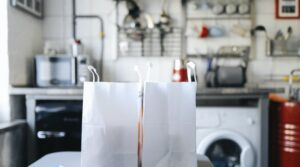,Is your house safe for children?
Do you have your own children or a few friends and family who visit and bring theirs? Or do you have a mixture of both of these? If so, then your home needs to be a safe place for them to be. If not, they could be injured. At the very least, you won’t ever be able to relax and just let them play as you’ll constantly need to be checking in on them.
Therefore, to keep everyone safe and to give yourself some all-important downtime, it’s a good idea to take some time to ensure your home is child-friendly. This might mean making some changes (some big, some small), but once the work is done, you won’t have to keep doing it, and assuming you’ve done it well, the safety measures will last for a long time.
3 Spots to Address to Make Your Home Safe for Children
Here are three areas of particular importance to look at.
1 – The Attic
The attic isn’t the kind of place that children are going to want to play in most properties. Most people use if solely for storage and keep it out of bounds. However, there are some hidden dangers that can be found in attic spaces, and whether it’s a room that no one ever goes into, or you’ve turned it into a child’s paradise of a playroom, those dangers will still be the same.
The first thing to look out for is rodents. Rats and mice love to live in attic spaces as they often have a free run of the place. Plus, they can hide away in the walls and roof and keep warm (especially since the heat from your home will rise to this area). If a child were to touch something that a rat had urinated on, it could make them sick. Not to mention rat droppings and the fact that rodents can be aggressive if disturbed.
To make this area (and the rest of your home) safe for kids, it’s a good idea to hire a pest control company to remove the danger and make your home a more pleasant place to be.
2 – The Kitchen
The kitchen, with all its sharp blades and hot ovens, is likely to be the most dangerous area of the house for children. Ideally, you should close the door or put up a gate and not allow access unless you’re in there.
To make doubly sure that all will be well. Even with an adult supervising, accidents can happen. Thus, you should lock all the knives, scissors, and other sharp objects in one drawer together. Even if a child were to start opening cupboards and drawers, they wouldn’t be able to get into that one.
Make sure you place cleaning chemicals in another locked store cupboard, or at least on a high shelf out of the reach of small hands. It’s a good idea to show the children these items and explain why they mustn’t touch them (without going into too much graphic detail). Otherwise, they will be intrigued and perhaps find out for themselves.
When you are using the stove, opt for the burners at the back because if a child were to reach up, they wouldn’t be able to grab at a hot saucepan or place their hands on a hot burner.

3 – The Bathroom
Once you have taken care of the kitchen, the bathroom will be the next room to look at. There is a little less in here than in the kitchen that could be dangerous to kids, but it is still enough for it to be a concern. Take your medicine cabinet, for example. Is it in easy reach? What do you keep in it? If a child could reach it and you have medication or scissors or cleaning products in there, or anything you wouldn’t want a child to touch, in fact, then again, you need to put a lock on it. Either that or move it somewhere a child can’t reach it (as long as you still can, of course!).
With a tiled floor like you would usually find in a bathroom, you should install special non-slip mats. Small children run a lot, they run everywhere. But if they ran into the bathroom, even on a dry floor, they could easily slip on the tile and hurt themselves.
Plus, if you are going to bathe children, never leave them unsupervised. It is possible to drown in a very small amount of water, and even just leaving the room for a moment to answer the front door or check on your emails could spell disaster.

The Takeaway: Check These Three Areas to Make Your Home Safe for Children
Three spots that represent a danger to little ones are:
- Attic
- Kitchen
- Bathroom
So implement these measures to make your home safe for your children.
- Are Geraniums Annual or Perennial? - 09/21/2024
- DIY Home & Garden: Featured on ApartmentGuide - 09/21/2024
- Bacon: Creative Uses That Go Beyond the Breakfast Table - 09/08/2024


